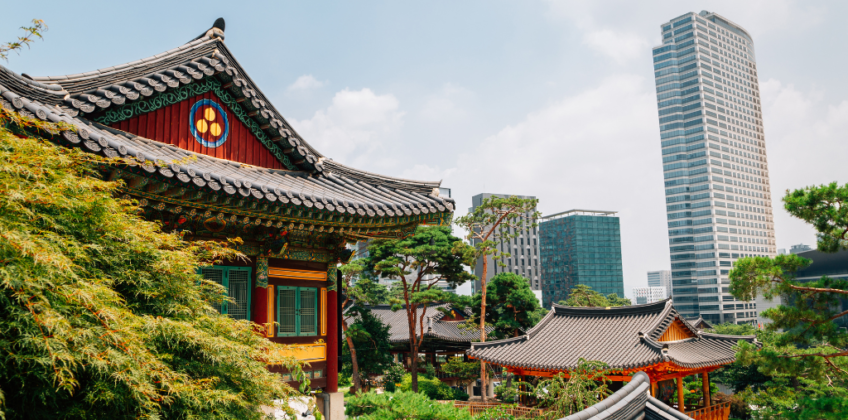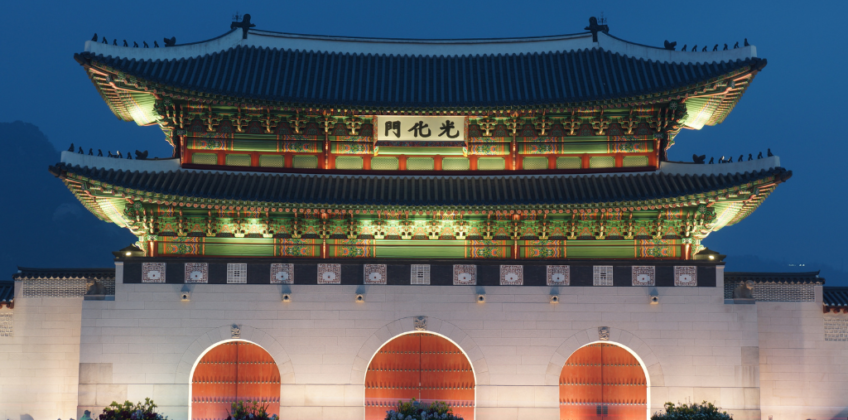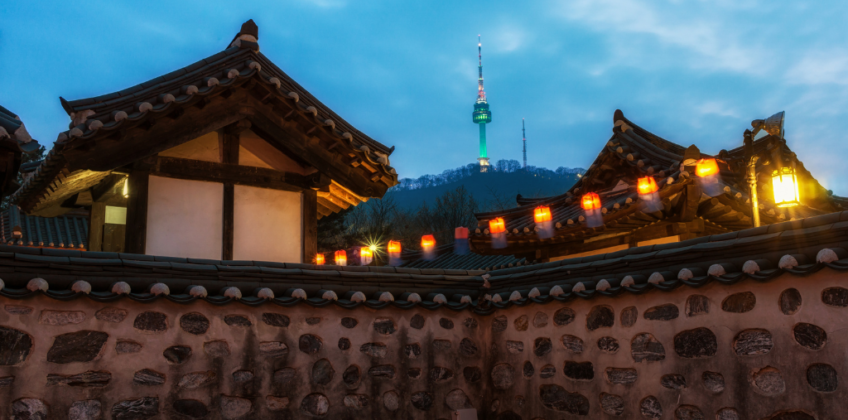Itineraries Expand all
-
Day 1 : Incheon Arrival/Seoul

Arrival to Inchon Airport/ Transfer to Seoul by private coach.
Check in Seoul hotel.
No Guide Service.
Overnight in Seoul(Not Including Air-ticket.)
-
Day 2 : Seoul (Hotel Breakfast)
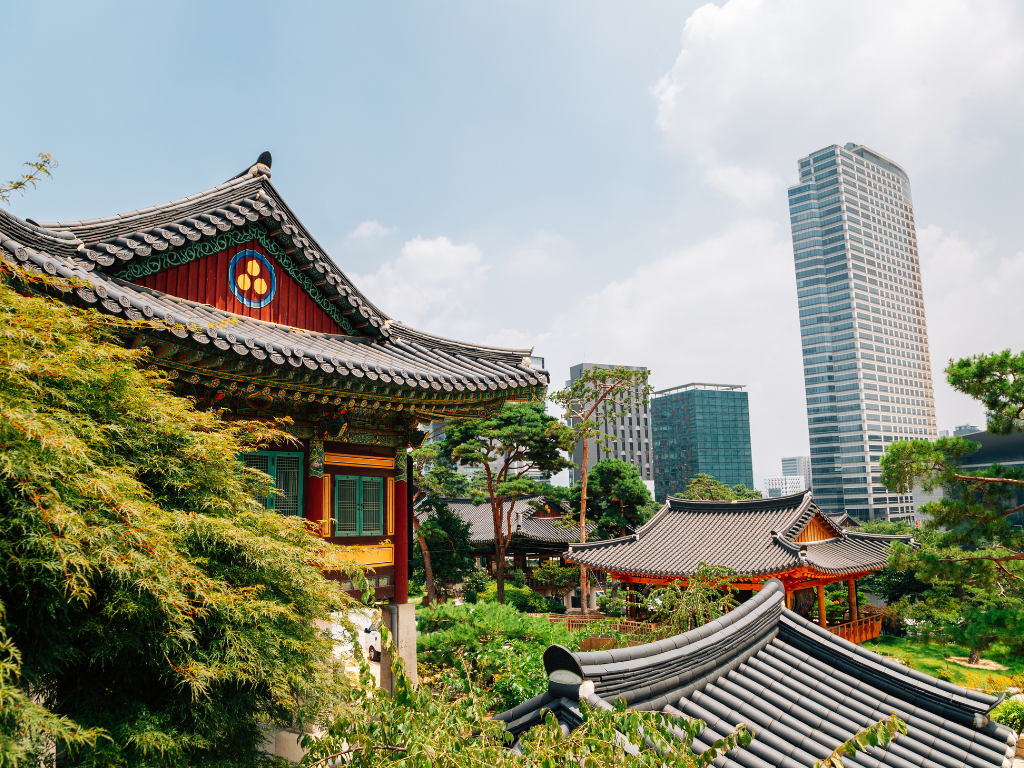
Seoul Bongeunsa Temple
Bongeunsa Temple, once Gyeonseongsa Temple, was built in 794 and renamed Bongeunsa Temple in 1498. It houses 3,479 Buddhist scriptures, including Kim Jeong-hee's works. The temple hosts a Buddhist ceremony called Jeongdaebulsa, where monks carry scriptures and recite Buddhist rites.
Songpa Naru Park
Songpa Naru Park, also commonly referred to as Seokchonhosu Lake, is a citizen park in Seoul with a jogging course and walking trails. It has two lakes with Songpa-daero Boulevard running in between. Originally, a branch of the Hangang River ran through the site, forming one large lake, but the lake was divided into two with the construction of Songpa-daero Boulevard. The total size of the two lakes is 217,850 ㎡, and they hold about 737 tons of water. The depth of the lakes is 4-5 meters.
COEX Mall
Starfield COEX Mall, located at the center of Seoul, leads in trend and culture. Combining fashion, food, culture and entertainment, the mall provides everything the visitors need. The Starfield Library offers a space to rest and entertainment with books.
Dongdaemun Design Plaza
Starfield COEX Mall, located at the center of Seoul, leads in trend and culture. Combining fashion, food, culture and entertainment, the mall provides everything the visitors need. The Starfield Library offers a space to rest and entertainment with books.
• Over Night In Seoul
-
Day 3 : Seoul (Hotel Breakfast)
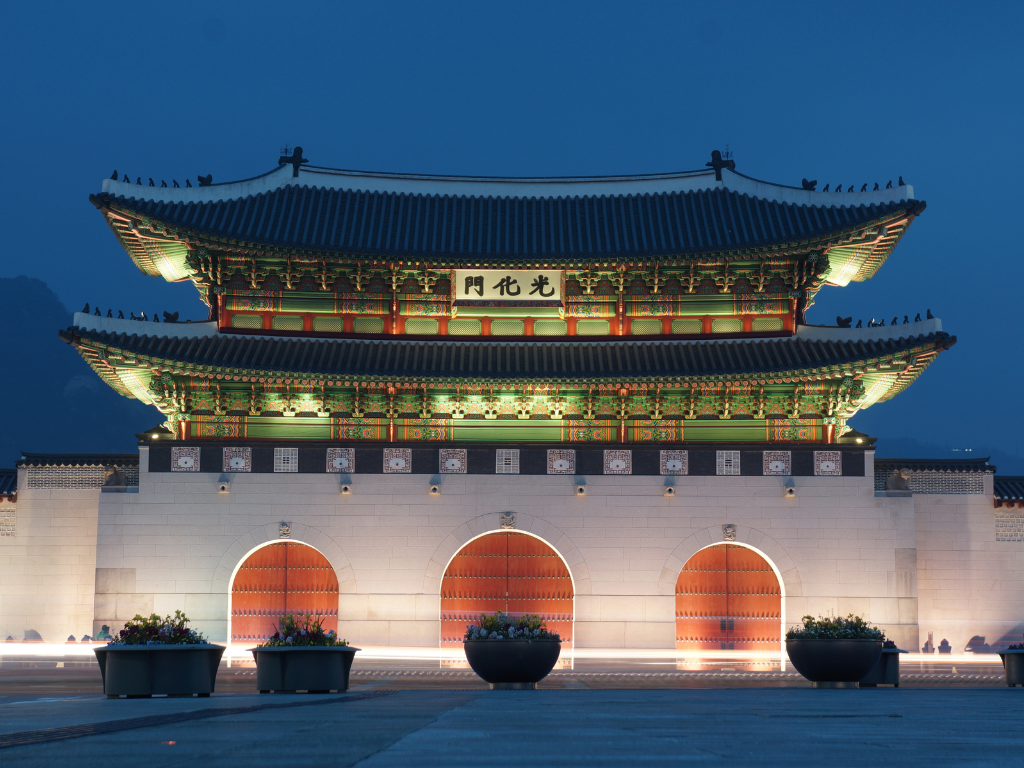
Gwanghwamun Square
Gwanghwamun Square, located from Gyeongbokgung Palace to Sejongno Sageori Intersection, features a statue of King Sejong the Great and Admiral Yi Sunshin, as well as the 12.23 Fountain, Haechi sculpture, flower carpet, and Yeoksamulgil, the "Waterway of History" on either side.
Gyeongbokgung Palace
Gyeongbokgung Palace, built in 1395, is the largest and most beautiful of the five palaces. Despite being destroyed by fire during the Imjin War, all buildings were restored under King Gojong's leadership.
Traditional costume experience
OPTIONAL: Traditional costume experience – wearing hanbok in the palace From 20$/Pax
Blue House (Presidential Residence).
The signature markings of the Presidential Residence of Cheong Wa Dae are its blue tiles. It is the first thing that catches one's attention upon entering the Premises. The blue tiles and the smooth roof blend beautifully with Bugaksan Mountain in the backdrop.
Bukchon Hanok Village
Bukchon Hanok Village, surrounded by Gyeongbokgung Palace, Changdeokgung Palace, and Jongmyo Shrine, is home to hundreds of traditional houses called hanok dating back to the Joseon dynasty. Today, these hanoks serve as cultural centers, guesthouses, restaurants, and tea houses.
Jogyesa Temple
Is the center of Korean Buddhism? The temple was built in the late 14th century during the Goryeo period and was once turned into ashes due to fire and was rebuilt under the name of Gackhwangsa Temple in 1910 with the effort of many respectful monks, namely Han Yong-un and Lee Hee-gwang. The temple was given a role as the head temple of Korea’s Buddhism and renamed to Tegosa Temple in 1936. In 1954, a purification drive took place to eliminate Japanese influence and revive traditional Buddhism, which established the present day Jogyesa Temple as a result.
Cheonggyecheon Stream
Cheonggyecheon Stream, an 11 km long modern stream in downtown Seoul, was restored during an urban renewal project. It was previously covered with an elevated highway post-war. In 2003, the highway was removed, reviving the stream from its former state.
Insa-dong
This was where antiques and artworks were traded during the olden days of Korea. Today, it is a must-visit area among tourists for its variety of traditional souvenirs and Korean antiques. The small and cozy alleyways are lined with galleries as well as traditional tea houses, pubs and restaurants.
• Over Night In Seoul
-
Day 4 : Seoul (Hotel Breakfast)
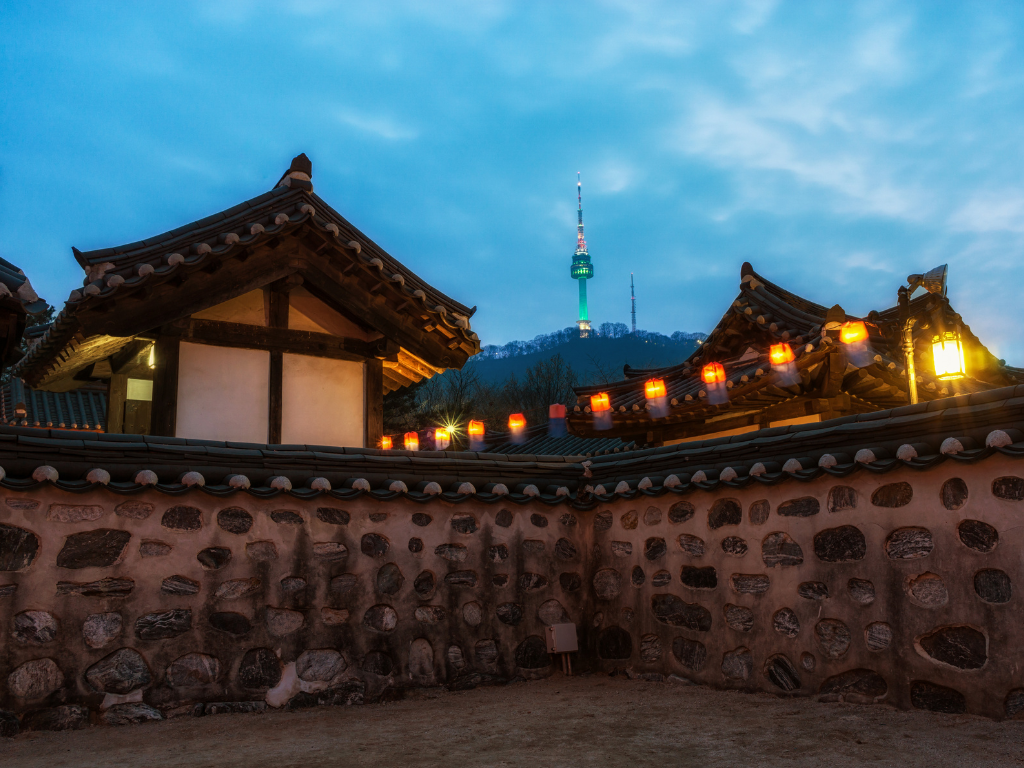
Namsangol Hanok Village
Namsangol Hanok Village, opened in 1998, features five restored Korean houses, a pavilion, a garden, a performance art stage, and a time capsule plaza. It offers a peaceful escape from city life, offering a glimpse into Korea's traditional life.
N Seoul Tower by Cable and Observatory
Namsan Cable Car provides a panoramic view of downtown Seoul. The cable car has been in operation for over 40 years, taking tourists and residents alike to Namsan Seoul Tower, one of the most representative tourist attractions in the city.
Myeong-dong
Myeong-dong is a major shopping district in Seoul, featuring numerous brand name shops, department stores, and designer brands. It offers clothing, shoes, and accessories, as well as family restaurants, fast food, Korean, Western, and Japanese dining options. The district also features hair salons, banks, and theaters, offering affordable fashion goods at reasonable prices.
• Over Night In Seoul
-
Day 5 : Seoul (Hotel Breakfast)
Hotel Check Out Transfer to ICN International Airport by private coach
No Guide Service
Departure(Not Including Air-ticket.)
Availability
TZ-1311
- We offer personalized itineraries that cater to your preferences.
- Our deep local expertise ensures authentic and unique experiences.
- We specialize in creating immersive, culturally rich travel experiences.


